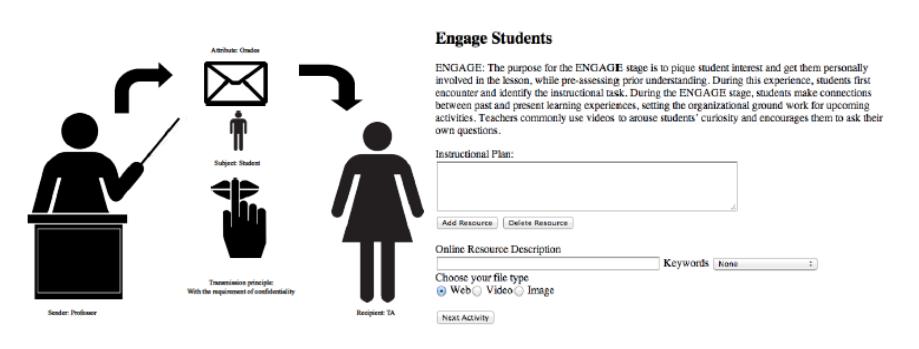Our goal is to harness the power of the crowd for solving problems in a variety of domains such as privacy, education and image processing. In the context of privacy, we develop an approach to identify privacy norms based on crowd responses to a series of multiple choice questions that reflect their expected privacy preferences. In the facial expression modeling project, our methodology employs crowdsourced, free-response expression labeling of images of our 3D avatar followed by natural language processing techniques to determine synonymous responses. Finally, in the context of education, we design a collaborative platform which leverages the vast amount of educational resources on the Web and allows teachers to create, share and rate content and generate annotated lesson plans to improve the quality of learning in the classroom.

Drafts & Publications
Crowdsourced Facial Expression Mapping Using a 3D Avatar
Facial expression mapping is the process of attributing signal values to a particular set of muscle activations in the face. This paper proposes the development of a broad lexicon of quantifiable, reproducible facial expressions with known signal values using an expressive 3D model and crowdsourced labeling data. Traditionally, coding muscle movements in the face is a time-consuming manual process performed by specialists. Identifying the communicative content of an expression generally requires generating large sets of posed photographs, with identifying labels chosen from a circumscribed list. Consequently, the widely accepted collection of configurations with known meanings is limited to six basic expressions of emotion. Our approach defines mappings from parameterized facial expressions displayed by a 3D avatar to their semantic representations. By collecting large, free-response label sets from naïve raters and using natural language processing techniques, we converge on a semantic centroid, or single label quickly and with low overhead.
Privacy through Contextual Integrity
Designing programmable privacy logic frameworks that correspond to social, ethical, and legal norms has been a fundamentally hard problem. Contextual integrity (CI) (Nissenbaum, 2010) offers a model for conceptualizing privacy that is able to bridge technical design with ethical, legal, and policy approaches. While CI is capable of capturing the various components of contextual privacy in theory, it is challenging to discover and formally express these norms in operational terms.
The conventional education ecosystem in developing regions is plagued by the lack of good quality textbooks and educational resources, lack of skilled teachers and high variability across student skill and motivational levels. This paper makes the case for establishing a crowdsourced learning ecosystem that leverages the collective intelligence of educators around the world to design a collaborative platform [Arias et al. 2000] to easily share, search, organize, rate and present educational materials for teachers and students around the world. In particular, we make two important contributions: (a) Modeling learning outcomes in crowdsourced learning: We propose a mathematical framework that enables systematic modeling and comparison amongst different education paradigms. Our framework provides a means to quantify student learning under a given paradigm based on critical factors such as the student skill (or ability), quality of the reading material (or the teacher), etc. (b) Crowdsourced Learning Platform: We describe the design of YeSua, an initial prototype of our crowdsourced learning platform that uses an inquiry-based framework for generating annotated lesson plans for different subjects.